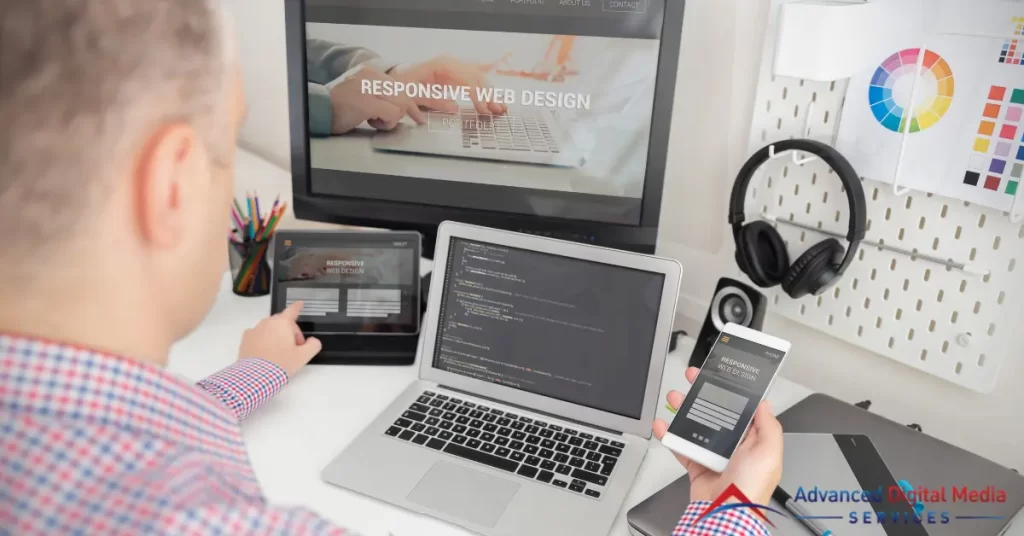Effective web design is more than just aesthetics, it plays a crucial role in shaping customer experience. In this digital age, where websites serve as virtual storefronts, businesses must recognize the impact of web design on their audience. Whether it’s the layout, color scheme, or interactive elements, every aspect of a website can influence how customers perceive and interact with a brand.
To provide a seamless online journey, companies must prioritize user experience (UX) and invest in web designs that are visually appealing, easy to navigate, and optimized for various devices. Now, let’s explore how web design impacts customer experience and discover the advantages of minimalist web design, known for its clean lines, simple layouts, and a focus on essential content.
The Link Between Web Design and Customer Experience
Before we dive into how web design impacts customer experience, let’s discuss their relationship. Web design refers to creating a website’s visual layout, structure, and functionality. It serves as the digital storefront for businesses, and its effectiveness can significantly influence customer behavior.
How web design impacts customer experience can be likened to how a physical store’s layout and aesthetics shape a customer’s in-store experience. A well organized and visually appealing brick-and-mortar store can attract and engage customers, and similarly, a thoughtfully designed website can captivate users in the online space.
Conversely, poor web design effects and layout can deter potential customers, prompting them to look elsewhere. In this context, web design acts as a virtual first impression, and its quality can determine a business’s online success.
Several studies have delved into the impact of web design effects on customer experience:
Research from WEBO Digital indicates that enhanced web design can bolster customer retention by up to 74%. This suggests that businesses can significantly benefit from investing in user-friendly web design.
Additionally, a study available on ResearchGate emphasizes that the effects of website design on customer satisfaction can vary based on customer trust. The design and usability of a website play a pivotal role in shaping this trust.
An article from MDPI suggests that website design elements directly impact customer satisfaction. The design attributes of a website can influence user perceptions and their overall experience.
Incorporating these insights, it becomes evident that web design is not just about aesthetics but also about creating a seamless and positive user experience.
The Effects of Web Design on Customer Experience
Customer experience (CX) is a holistic view of all interactions a person has with a brand. In the digital age, a website is often the primary touchpoint for these interactions.
This highlights web design’s pivotal role in shaping the overall customer experience. Delving deeper, let’s understand how web design impacts customer experience.
1. First Impressions Matter

Upon landing on a website, users form an opinion within mere seconds. This initial judgment is heavily influenced by web design. A site that boasts a modern, visually appealing design can foster trust and prompt users to delve deeper.
Conversely, outdated or aesthetically lacking designs can deter users, pushing them to exit swiftly.
Web design effects show that 88% of online consumers are less likely to return to a site after a negative experience. Such data underscores the significance of making a positive first impression through a well thought out, user-friendly web design.
2. Usability and Navigation
Central to web design is the creation of a user-friendly interface. This entails structuring the website to ensure visitors can effortlessly locate what they seek. Features like intuitive navigation, lucid menus, and organized content are hallmarks of a user-friendly web design.
However, a site plagued by convoluted navigation or a jumbled layout can disorient users, detracting from their experience and potentially driving them to competitors.
3. Visual Hierarchy’s Role
Visual hierarchy involves organizing elements on a webpage and directing where users’ attention is drawn. Effective web design is pivotal in optimizing this hierarchy, significantly influencing how web design impacts customer experience by shaping users’ emotions and perceptions.
A well-crafted website can strategically use size, color, and contrast, steering users toward intended actions by spotlighting pivotal information and call-to-action (CTA) buttons. In contrast, poor visual hierarchy can muddle the user’s journey, hindering them from discerning content priorities.
4. Loading Speed’s Impact
In our rapid digital era, users prioritize speed. The design of a website can dictate its loading time, which in turn shapes the customer experience. With expectations of near-instantaneous loading, a slow website with too many pictures or bad design can annoy visitors.
Conversely, a streamlined, optimized website ensures swift load times, fostering a gratifying user experience. This necessitates a collaborative effort between web designers and developers to fine-tune site performance.
5. Forging Emotional Connections
Web design can make people feel things, and that’s important for what people decide. If a design matches a brand’s feelings and makes users feel the right way, it can create a strong connection with them.
For example, a website with bright colors and moving pictures might aim to excite people, while a minimalist web design with lots of space evokes elegant and refined sensations. When the design makes users feel the right way, they become more interested, compelled to do what the website wants.
The Advantages of Minimalist Web Design

Minimalist web design, a widely embraced approach in the digital realm, champions simplicity and the judicious use of white space. This design ethos is rooted in eliminating superfluous elements, ensuring the content remains the focal point.
The effects of minimalist web design on the user experience are manifold:
1. Accelerated Loading Times
Given their streamlined nature, minimalist websites inherently load faster, showcasing firsthand how web design impacts customer experience. These websites offer a simplified, user-friendly web design by eliminating unnecessary elements and focusing on the essentials.
This absence of excessive elements makes the site aesthetically pleasing and reduces the amount of data that needs to be loaded, leading to quicker load times.
According to a report from BrowserStack, the average page load time on a desktop computer in 2023 is 2.5 seconds, and it’s 8.6 seconds on mobile. This makes speed critical in determining the web design effects on customer experience.
In today’s fast-paced digital world, users have grown accustomed to instant gratification. They expect websites to load swiftly and offer the information they seek without delay.
2. Heightened Readability
A minimalist user-friendly web design inherently reduces visual distractions, bolstering the site’s readability. Employing legible fonts, maximizing white space, and organizing content methodically make it far more user-friendly, allowing visitors to absorb the site’s information effortlessly.
3. Concentration on Crucial Components
Stripping away the extraneous, minimalist web design zeroes in on vital elements like headlines, CTAs, and pivotal images. This uncluttered approach amplifies the impact of these components, potentially boosting conversion rates and nudging users towards desired actions, be it a purchase or form submission.
4. Versatility
One of the standout web design effects of minimalism is its adaptability. Minimalist sites can seamlessly integrate responsive design principles, ensuring optimal performance across diverse devices, from desktops to mobiles. Given that mobile browsing constitutes a significant chunk of web traffic, a responsive, user-friendly web design is indispensable for tapping into and captivating a broader audience.
5. Long-Term Cost Savings
Maintaining a website can be expensive, but a minimalist design can help cut these costs. By simplifying the elements that need regular attention and updates, businesses can save time and money while offering an attractive online presence. This approach balances affordability and aesthetics, considering the financial implications of web design effects on the overall customer experience.
Key Takeaway
The success of a website depends on its ability to deliver an exceptional user experience. A well made and user-friendly web design can captivate visitors and encourage them to engage, while a poorly designed one can drive them away, leading to missed opportunities.
When it comes to web design, a user-friendly web design can yield significant benefits. Websites that are easy to navigate and use can enhance the overall user experience, reduce bounce rates, and improve search engine rankings. Moreover, they can increase conversions, ultimately contributing to the business’s success.
Meanwhile, minimalist web design can enhance user experience through faster loading times, increased readability, and improved visual hierarchy. It also ensures that your website looks great on mobile devices, meeting the expectations of the growing number of users who browse the internet on the go.
Enhance Customer Experience with Effective Web Design
If you’re ready to take your website to the next level, partnering with a skilled and experienced website designer in Clearwater, FL, is smart. At Advanced Digital Media Services, we can create a visually appealing and functional website that aligns with your brand and delivers a seamless user experience. Contact us today, and let’s discuss your web design needs!






